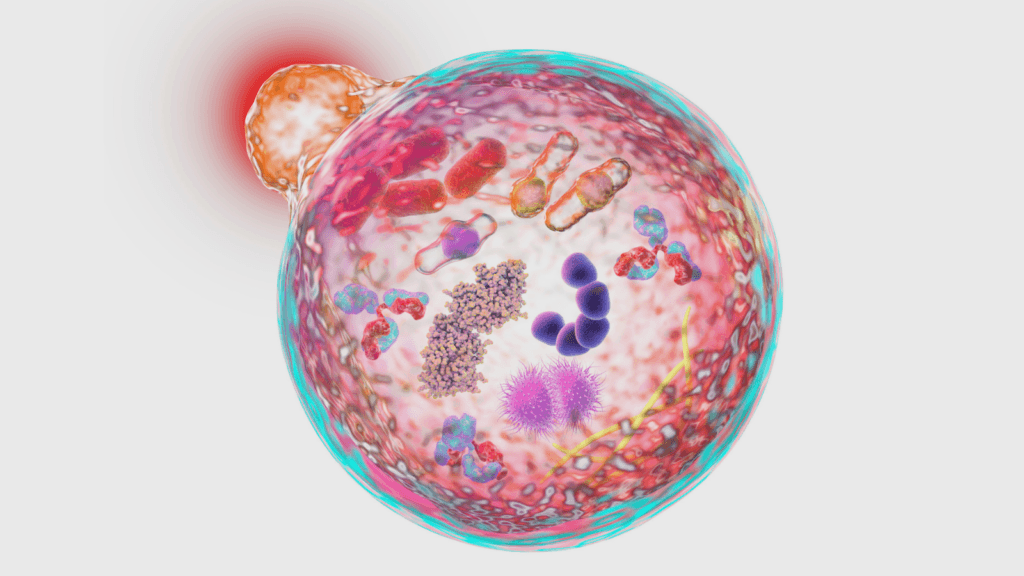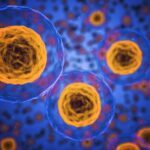Autophagy has gotten tremendous attention recently due to its potential health benefits.
In fact, it has become an exciting field in life sciences research these days.
In this article, we’ll provide a simple overview of autophagy and its mechanism.

In simple words, autophagy is a process through which cells break down those components that are no longer needed. The term “autophagy” comes from the Greek words “auto” meaning self, and “phagy” meaning eating. Essentially, autophagy is a process by which cells “eat themselves” to maintain proper cellular function. This means that our body cells have the power of self-eating, and during this process, they cause the degradation of their contents. But degradation is not the end result of autophagy. This process also takes part in recycling degraded components so that cells can reuse them for their benefit.
Initially, autophagy was thought to be responsible for the degradation of proteins or other similar smaller components of the cell. Later on, researchers found that it has the capability of degrading the bigger structures like mitochondria, endoplasmic reticulum, and even the entire nucleus.
The removal of these structures, which are no longer functional, by autophagy is important because their accumulation can contribute to various diseases, including cancer, neurodegenerative disorders, and metabolic disorders.
Mechanisms of Autophagy
Autophagy is a complicated process that involves many steps. These steps are mediated by a group of proteins known as autophagy-related proteins (ATGs). To date, researchers have identified 40 such ATGs. Notably, not all of these ATGs are exclusively involved in the autophagy process. Some of them have additional roles in other cellular processes.
Now let’s have a look at these various steps:
1. Initiation
Cells initiate the autophagy process in response to various stresses. These include nutrient deprivation, oxidative stress, and pathogen invasion. When cells are exposed to these stresses, a group of ATGs proteins activates the initiation complex. The complex involves three main proteins (ULK1/2, ATG13, ATG101, and FIP200). The formation of this complex facilitates other steps to get ready for their role in the degradation process.
Not long ago, the initiation complex was considered the prime step in autophagy, but researchers have now realized that it’s not necessarily required for all forms of autophagy.
2. Autophagosome formation and elongation
Once the ULK1 complex is activated, it triggers the formation of a membrane structure known as the phagophore. The origin of this membrane is still under debate. But most researchers agree that it originates from the endoplasmic reticulum, a network of sac-like structures and tubes in the cell.
The phagophore engulfs the target cellular components and expands to form a double-membrane vesicle called the autophagosome. A protein called LC3 is a critical player in this step. In the absence of LC3, the autophagosome formation is halted and the autophagy is disrupted. For that reason, researchers often use this protein to access the autophagy process.
3. Degradation
The autophagosome then fuses with a lysosome, a specialized organelle that contains enzymes capable of breaking down cellular components. The cellular contents carried inside the autophagosome are delivered to the lysosome during this fusion process.
In many cases, the autophagosome fuses with a membrane-bound sac-like structure, the endosome, before its fusion with the lysosome. This additional step is believed to equip autophagosome with the machinery required for lysosome fusion. Once delivered into the lysosome, the cellular contents are degraded by the action of lysosomal enzymes called hydrolases.
4. Reuse
The degradation process in the lysosome leads to the generation of molecules like amino acids and lipids. These molecules are reused by the cell depending on the need. For example, under starvation, autophagy results in the generation of amino acids (building blocks of proteins) that are used to make proteins required for cell survival. Some of these amino acids are also utilized in the energy-generating processes of the cell. Similarly, the degradation process generates free fatty acids, which support the cell’s respiration.

Related post: Autophagy is Amazing – Here’s What Research Says About its Health Benefits

